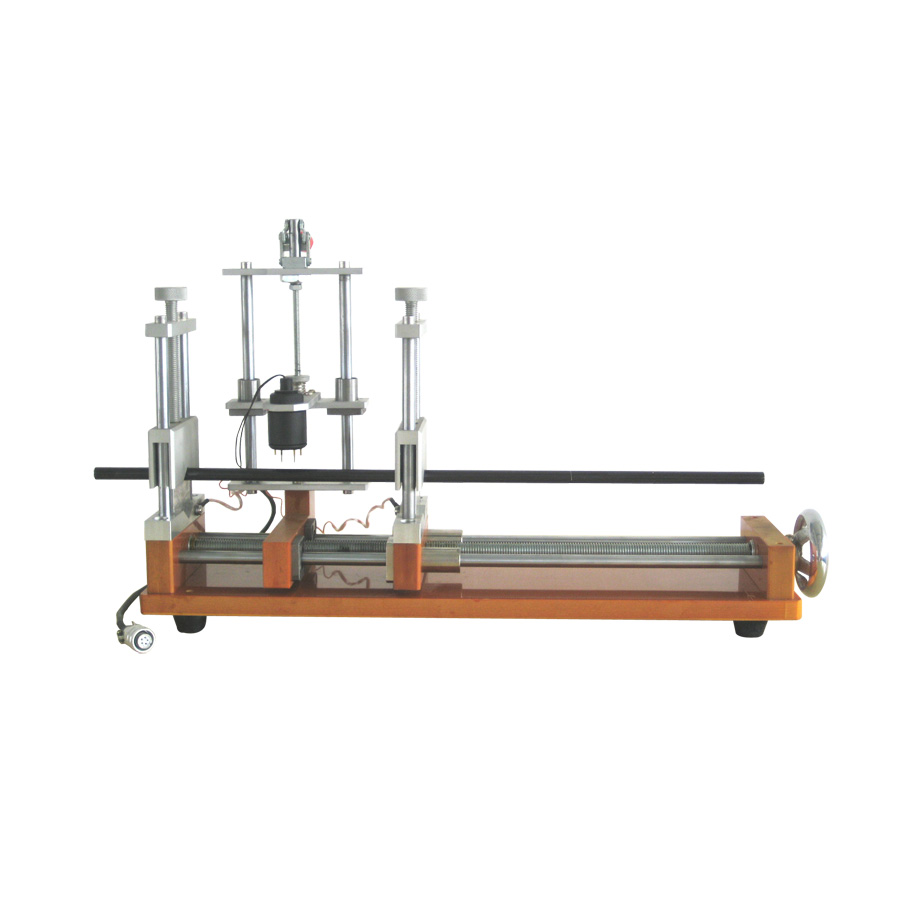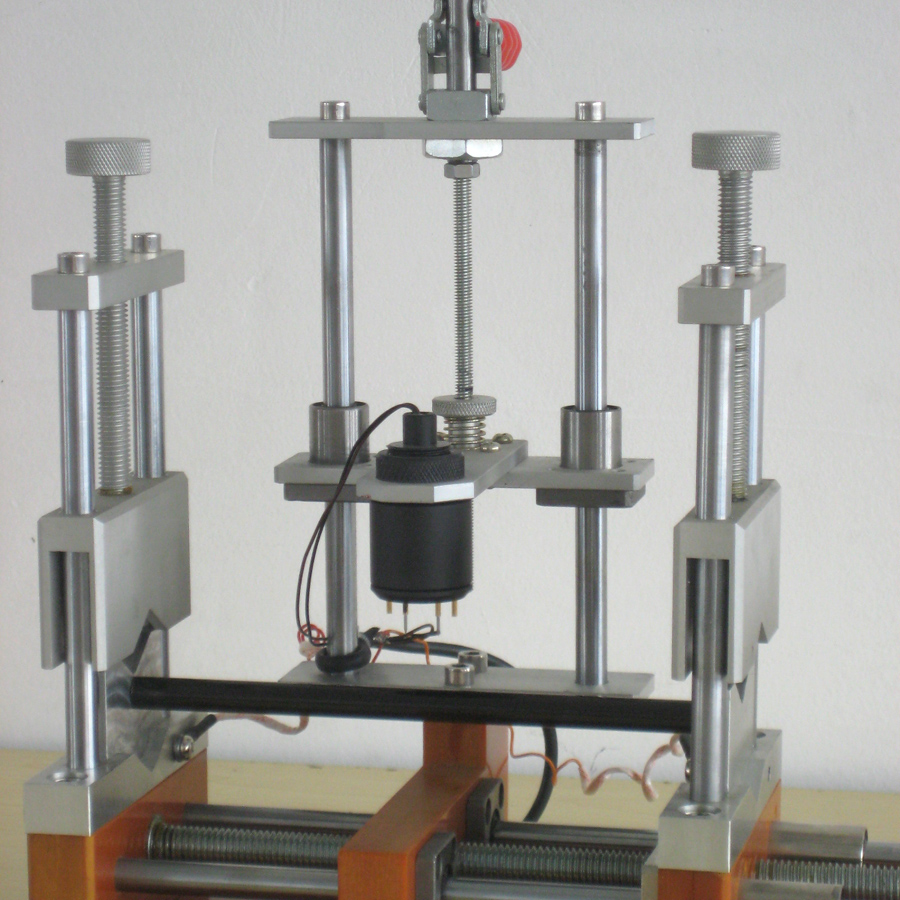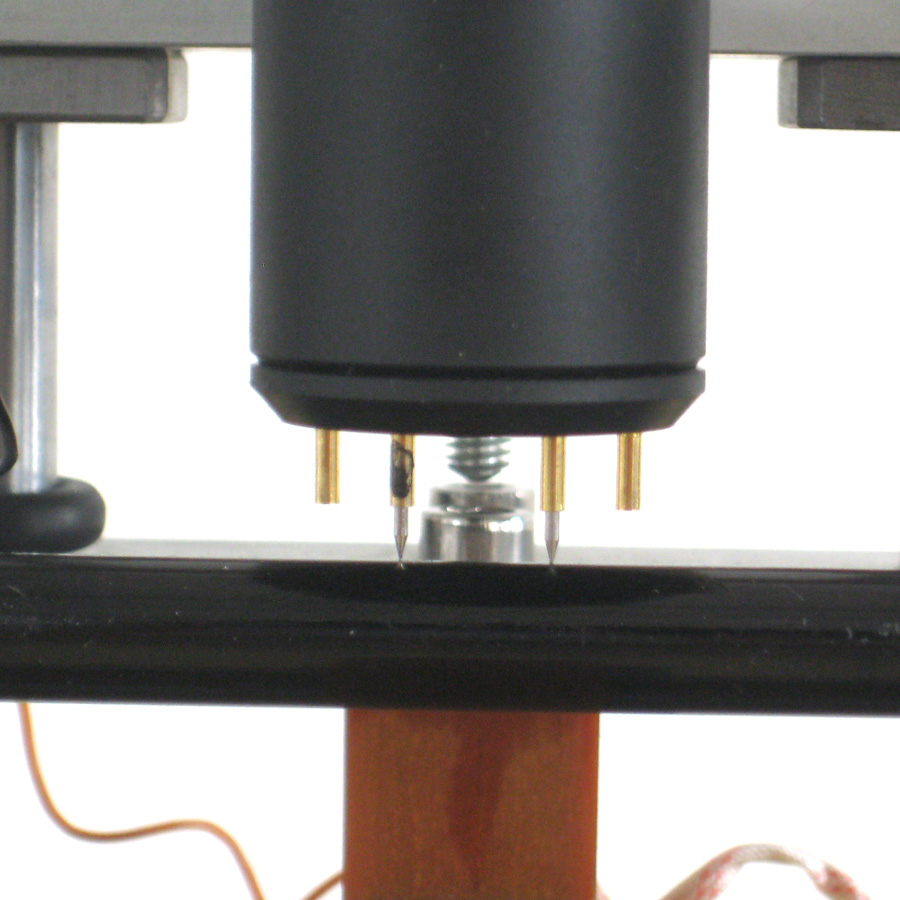SZT-K1 two probe resistivity tester
AddDate: 2022/12/5 13:57:10
Hits: 4395
I. Overview of functional and structural features



SZT-K connection ST2258C tester Offline operation
II. Main Technical Parameters and Description
Distance between two probes: 10 mm, 15 mm, 20 mm adjustable
Measurable sample: diameter or side length: round section ≤Φ 50mm, or ≤ 50mm × 50mm square section.
Length (or height): the top holding mode of both ends L ≤ 420mm, and the side clamping mode is unlimited
Measuring direction: axial (length direction).
III. Usage
1. Placing samples:

Figure A: Clamping with both ends facing the top Figure B: Clamping on both sides
The sample clamping method shall be selected according to the length and needs of the sample. For the thicker and shorter samples, it is suitable to use the two end to top clamping method, as shown in Figure A For slender samples, it is suitable to use the method of side clamping at both ends, as shown in Figure B.
The operation steps for sample placement in the way of clamping at both ends are as follows:
First, lift up the red wrench to the rear plate, lift up the two probe test probes to facilitate sample clamping. As shown in Figure C, turn the hand wheel on the right side of the bottom plate of the test bench, so that the distance between the right and left electrodes is slightly greater than the length of the sample. As shown in Figure C, lift the sample with the left hand and place it horizontally between the two electrodes. With reference to the "V" groove of the left and right electrodes and the position of the test probe probe, place the sample horizontally under the probe probe, At an appropriate vertical height, turn the handwheel with the right hand and move the right electrode to the left to clamp the sample from both sides. As shown in Figure D. In order to make a good contact between the sample and the electrode, it is better to pad carbon paper on the contact surface, the same below.

Figure C Figure D Figure E
The operation steps for sample placement in the way of side clamping at both ends are as follows:
With reference to Figure D and the end face clamping method, the difference is that first adjust the clamping nuts on the left and right electrodes to make the left and right movable upper electrodes upward first, so that there is enough space between the reverse "V" grooves of the upper and lower electrodes to put samples. Place the sample, adjust the vertical lock nut, and clamp the sample. See Figure E.
2. Probe needles pressure adjustment:

Figure F Figure G Figure H
Press the operating wrench on the upper part of the test bench forward and downward, and then press down the probe. As shown in Figure F, when the probe is depressed, the nut on the middle screw of the vertical guide rail bracket of the test bench can be adjusted according to the distance between the upper side of the sample and the probe tip, as shown in Figure G (loosen the locking nut first). As shown in Figure H, observe the degree of the probe being depressed and adjust the test pressure! Generally, the probe should be compressed for 2mm. Adjust the rear locking nut.
3. Adjust the correction coefficient and read the resistivity value:
According to the sample section S and the probe pitch L of the two probes, the correction coefficient K is obtained by looking up the attached table of the instruction manual. Input it into the instrument and directly read the resistivity value. Refer to the instruction manual of the instrument for the operation of the instrument.
4. Resistivity values of test samples at different sections:
After a section point is tested, lift the probe, move the probe unit horizontally, and then press the probe at the selected other section point to directly read the resistivity value.
5. Unloading samples:
Lift the probe first. For the sample clamped by the end face, turn the handwheel to loosen the sample after holding the sample by hand, and then remove the sample. For the core piercing side clamped samples, loosen the lock nuts above the two electrodes, and then extract the samples from both ends.
IV. Contact Information
Sales Manager: Grace Zheng
Tel.:+8618762109211
Email: zhengjingjing@szjgdz888.com
Alibaba Store: https://szjgdz.en.alibaba.com
| Product Order: | ||








